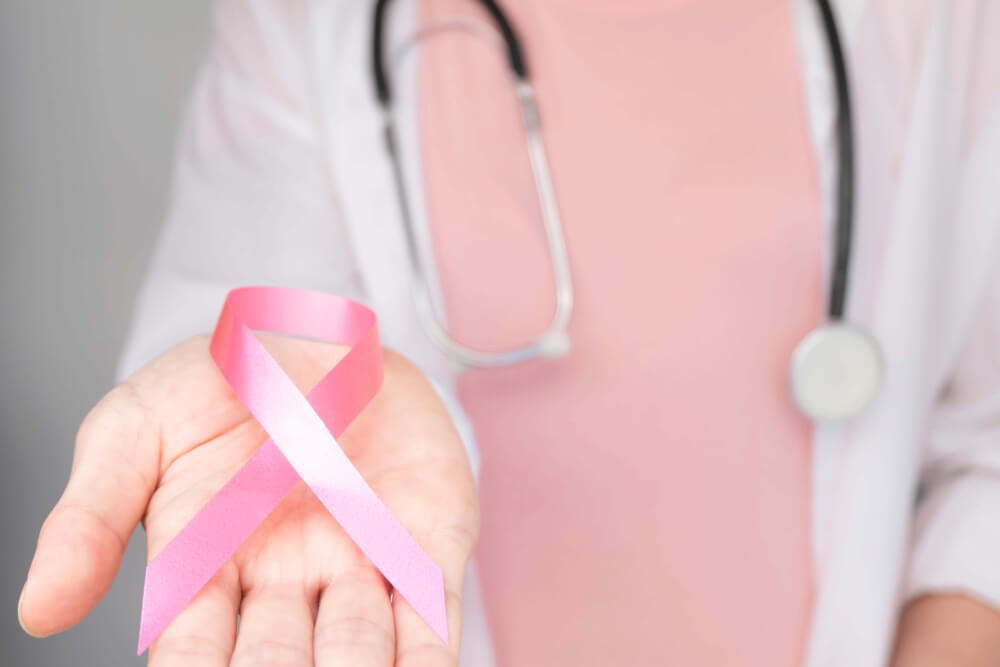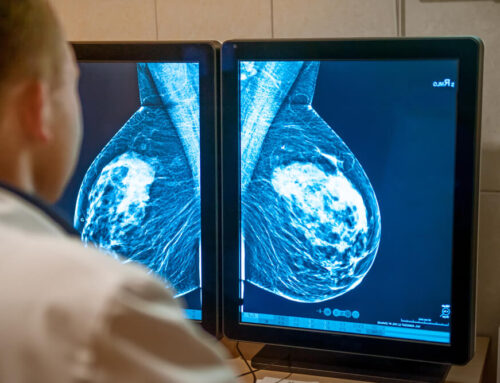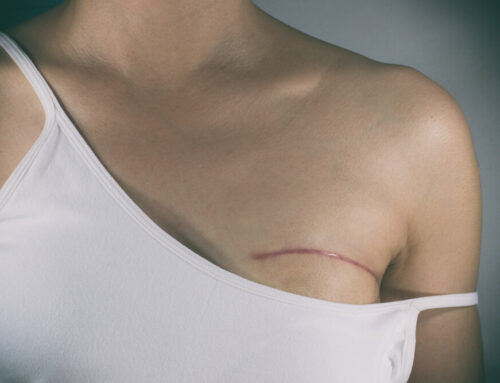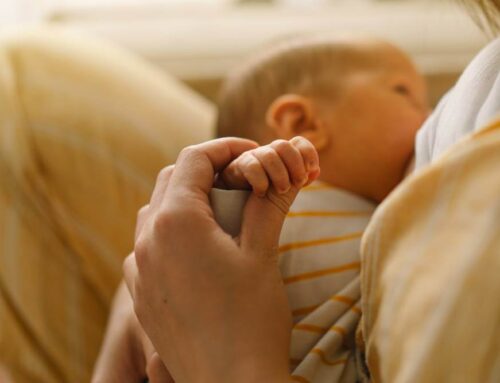Can teenagers get breast cancer? With the onset of the pressures that come with puberty, like boys and wearing the right clothes to school, breast cancer is the last thing that should be on a young woman’s mind. Yet, breast cancer can happen at any age, particularly for those young women that have a history of breast cancer in their family or a genetic disposition to breast disease. Other high-risk factors include obesity, excessive alcohol use, high red meat intake, and breast density. Interestingly, some studies have shown that birth control pills slightly increase breast cancer risk in teenage girls.
Teen Breast Cancer Causes and Symptoms
There are times that teen girls may discover a small lump in their breast, but it is almost always benign and typically triggered by normal hormonal fluctuations. These noncancerous lumps usually go away on their own. However, there are symptoms a doctor should be made aware of:
- The breast tissue hurts outside of normal soreness caused by a menstrual period
- Breast tissue puckers or dimples
- Itchy or scaly rash on breast
- Unexplained changes in breast symmetry, shape, and size
- Breast swelling, red, or hot to touch
- Nipple discharge is liquid or bloody
- Lump spreads to armpit or collarbone
- Lump is hard
- Lump size ranges
- Lump is painful
- Lump is fixed to the chest wall
Due to the high amount of treatment options for teen breast development, the survival rate is high. Teenagers are healthy enough to tolerate the most aggressive therapies used to treat breast cancer. That’s why its best to avoid high-risk lifestyle behaviors that can increase this risk. The American Cancer Society has noted that although environmental and lifestyle behaviors are not strongly associated with breast cancer, it’s best to avoid engaging in risky ones like smoking and consistently unhealthy diets. Other behaviors like radiation exposure to treat other diseases like leukemia or Hodgkin’s disease in young girls can increase the risk of breast cancer development, which takes an average of 20 years to develop.

Is Teen Breast Cancer Common?
Can teens get breast cancer? According to the National Cancer Institute, less than 2% of women are diagnosed before the age of 34. While the chance of being diagnosed with teen breast cancer is quite low, this period of adolescence is the perfect time to begin healthy habits like tobacco product avoidance, regular exercise, and implementing a healthy diet. Furthermore, less than 5% of breast cancer cases occur in women under the age of 40. With less than 25 cases of breast cancer per year in each age group under the age of 40, its likely other causes trigger breast cancer:
- Breast cysts – Similar to pimples on the skin, cysts are small growths under the skin. Women with fibrocystic breasts have breasts that regularly feel lumpy and contain cysts. Girls in their teens should talk with their doctors about this if they have these symptoms. Women with this issue should be able to distinguish between cancer and cysts.
- Cystosarcoma phyllodes – Phyllodes are fast-growing tumors but are always benign and are very rare. However, in 10% of cases, they spread to other parts of the body and many women get them removed.
- Fibroadenoma – This benign breast tumor is more common among young women in their 20s and 30s but occurs much younger. Although they don’t turn into cancer, they are associated with increasing the risk of breast cancer.
Other less common cancers include:
- Inflammatory breast cancer – Causes red or swollen breasts
- Paget disease – This disease spreads from the breast to the nipple
- Angiosarcomas – A rare soft tissue tumor of the breast that can begin in blood or lymph vessels and spread to the breast
- Phyllode tumors – These tumors can turn cancerous
It’s important to note that some breast conditions in teens are easy to treat. They include fibroadenomas, fibrocystic breast changes, and infections. There are other symptoms that young girls should not be worried about. These are perfectly normal and are not problems. Being familiar with them will help avoid being alarmed:
- Breast development – Early or late breast development can be an anxious time for teenage girls. They begin to develop during puberty starting at around age 9 or 10 but can start earlier.
- Symmetry – having one breast larger than the other is perfectly normal and typical. One breast may grow faster than the other resulting in one breast being as big as a whole cup size larger than the other.
- Size – It’s crucial to emphasize that breasts come in all shapes and sizes. No size is considered normal or usual. However, if they fail to develop at all or develop so large that they cause painful back issues, you should speak to your healthcare provider.
- Pain – During the menstrual cycle, it is usual to experience breast soreness due to hormone changes. If the pain is severe, you should speak to your healthcare provider.
Breast Cancer Screening in Teens
Although it is not typically recommended for women under 40 to undergo breast screening annually, it’s important for those teens experiencing symptoms to receive breast screening. Regular screening done at least every 3 years is recommended for women in their 20s. However, the American Cancer Society recommends that all women know how their breasts look and feel, and report any changes to their doctors. For younger women, digital mammography is recommended rather than a standard mammogram. It is most effective at identifying abnormalities in dense breast tissues.
Breast Cancer Treatment in Teens
Treatment for breast cancer in teens depends on how far the disease has spread and the teen’s general health and personal circumstances. All of these factors play an important role in what steps are taken. Some of the treatment options include:
- Surgery – In these cases, a lumpectomy or mastectomy is conducted. A lumpectomy includes the removal of the tumor and surrounding tissue. A mastectomy involves the removal of the whole breast. Depending on how far the disease has spread, either option may be best.
- Radiation – This therapy is usually used following a lumpectomy. Using cancer-killing beams, radiation therapy targets undetected cancer cells further reducing the risk of cancer returning.
- Hormone – This therapy is effective for those breast cancers that are affected by hormones in the blood. It utilizes drugs that block estrogen and/or progesterone.
- Chemotherapy – This is usually administered after breast surgery but before radiation, and uses drugs directly injected into the vein via a needle or pill to target and kill cancer cells.

Teen Breast Cancer Outlook
It is estimated by researchers that 80% of teens diagnosed with breast cancer at the ages of 15 to 19 will still be alive 5 years later. Since it’s extremely rare in teens, doctors may take the approach of wait and see by delaying treatment. It’s still important to take appropriate steps in preventing breast cancer like maintaining a healthy weight and diet, avoiding tobacco products, and staying physically active.
Make an Appointment
Conducting a self-breast exam is another great way to identify any changes early on. If you notice any changes that are out of the ordinary, give us a call and request an appointment today. We offer top quality services by board-certified breast specialists in breast surgical oncology, comprehensive evaluations, genetic counseling, and high-risk screening. We are best known for providing personalized and careful healthcare services with an unmatched commitment to excellence. Our experienced and compassionate medical professionals are here to support you on your healthcare journey.







Leave A Comment
You must be logged in to post a comment.